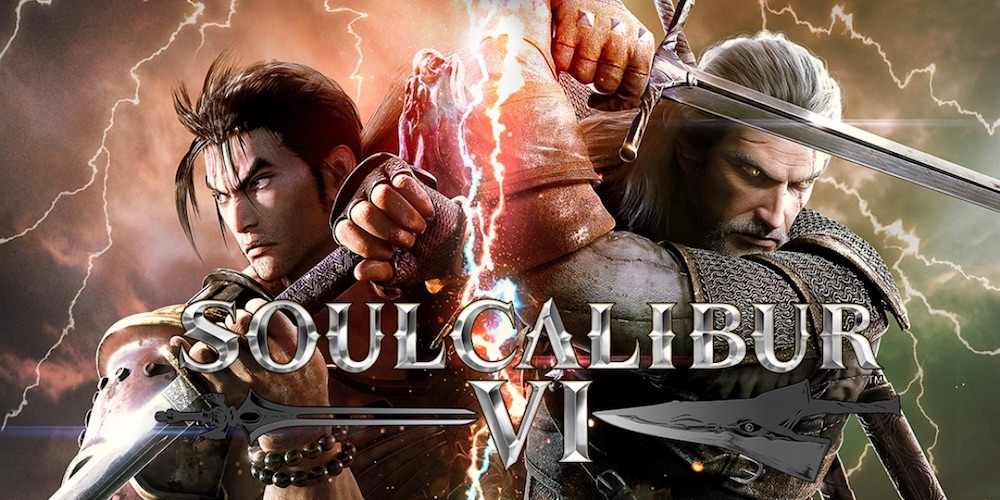
The vast Nintendo bubble notwithstanding, it feels a little weird in 2018 to still be writing things like “this is the first entry of the twenty year plus long-running series to come to PC,” yet of Soulcalibur VI this is a true and important point of difference that helps make sense out of the way the game is otherwise shaped. Going into this, the general feeling as I understood it was that Bandai Namco’s “second” side-view fighting series had a lean run for a while now. This is the first new entry since 2012’s tepidly-received V, but for many, the series has yet to return to the mark set by 2002’s multiplatform II – none since have been featured at EVO beyond their launch year, for instance. My own experiences with the series follow a similar trajectory for different reasons: I have fond(ish) memories of playing II on the GameCube owned by a high school girlfriend, an obdurate Talim-picker who made an easy habit of shredding me and my teen-boy ego. There was also a brief dalliance with IV, which fittingly and/or symbolically never quite became the tension-relieving sharehouse fixture it was intended to when I bought it for 360 back in 2008.
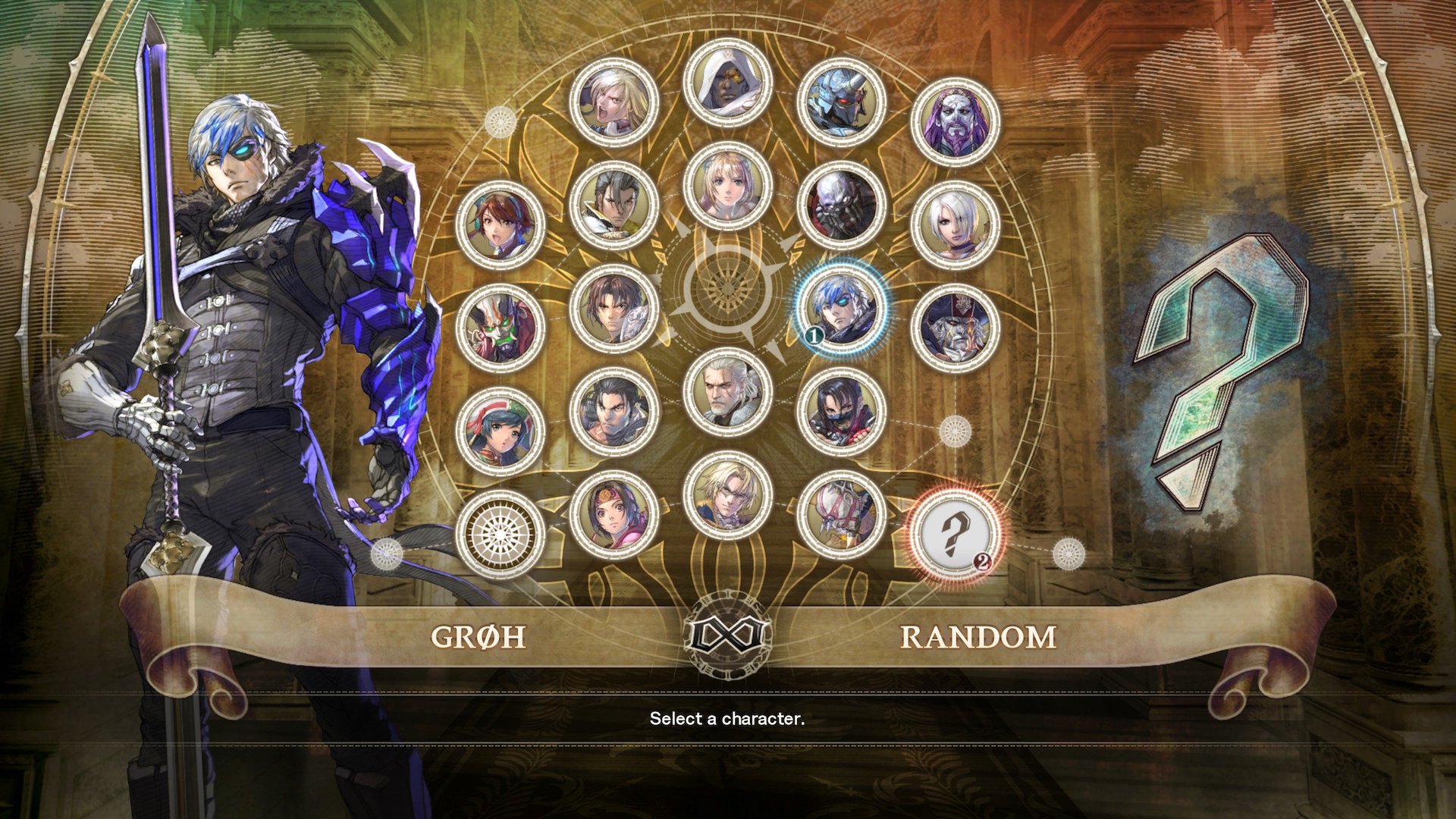
Despite – or perhaps because of – most of a decade away from the series, I would have been hard pressed at first to tell you if there was anything at all new or different about this iteration of swishy-pokey upon jumping into it last week: superficially it is uncannily to the letter with what I remember of the older versions. Unsurprisingly the core tenants of the series are unchanged – it’s still all about the aesthetically compelling arc of magic melee weapons that somehow never draw blood, there’s still the 3D dynamic of the 8-way run, and you can still knock your opponent out of the ring and then comically topple over the edge after them. But even beyond that, the characters are abundantly familiar down to the moves, the stances, even the overly skin-focussed costume designs of the female characters, to the end that playing any of the 19 returning heroes feels memory-pinchingly identical to how they did say fifteen years ago. The announcer – despite technically being voiced by a new human – seems to be the identical dramatic herald delivering the same obliquely dramatic lines as has always been. I was even pretty sure I’d played on most of the stages before. Sure, this time Geralt is guest-starring instead of e.g. Link or Yoda, and there were two other fighters I didn’t recognise from before, but on paper, this didn’t seem like nearly enough original content to justify a whole new game.
But for better and worse, that’s how Bandai have played it here: rather than innovate, the philosophy seems to have been to make a polished version of what already was; rather than introduce new characters, revamp and fine-tune a limited set of old ones. We see this also in the single-player “Soul Chronicle” story mode, which apparently is a reimagining of the series’ original storyline rather than a follow-up to the events of e.g. Soulcalibur V. I can’t verify this. Not only have I not played the previous single player entries, but I couldn’t force myself to absorb or parse any of the narrative, which is delivered entirely in animeic clichés and aphorisms, scripted with slightly-too-long pauses between lines as though it’s a middle-school drama production and the actors have to prompt each other frequently. The sprawling and oddly-named RPG-tinted mode “Libra of Souls” is a little better, if only because it offers a different kind of single-player experience and blessedly forgoes the voice delivery entirely.
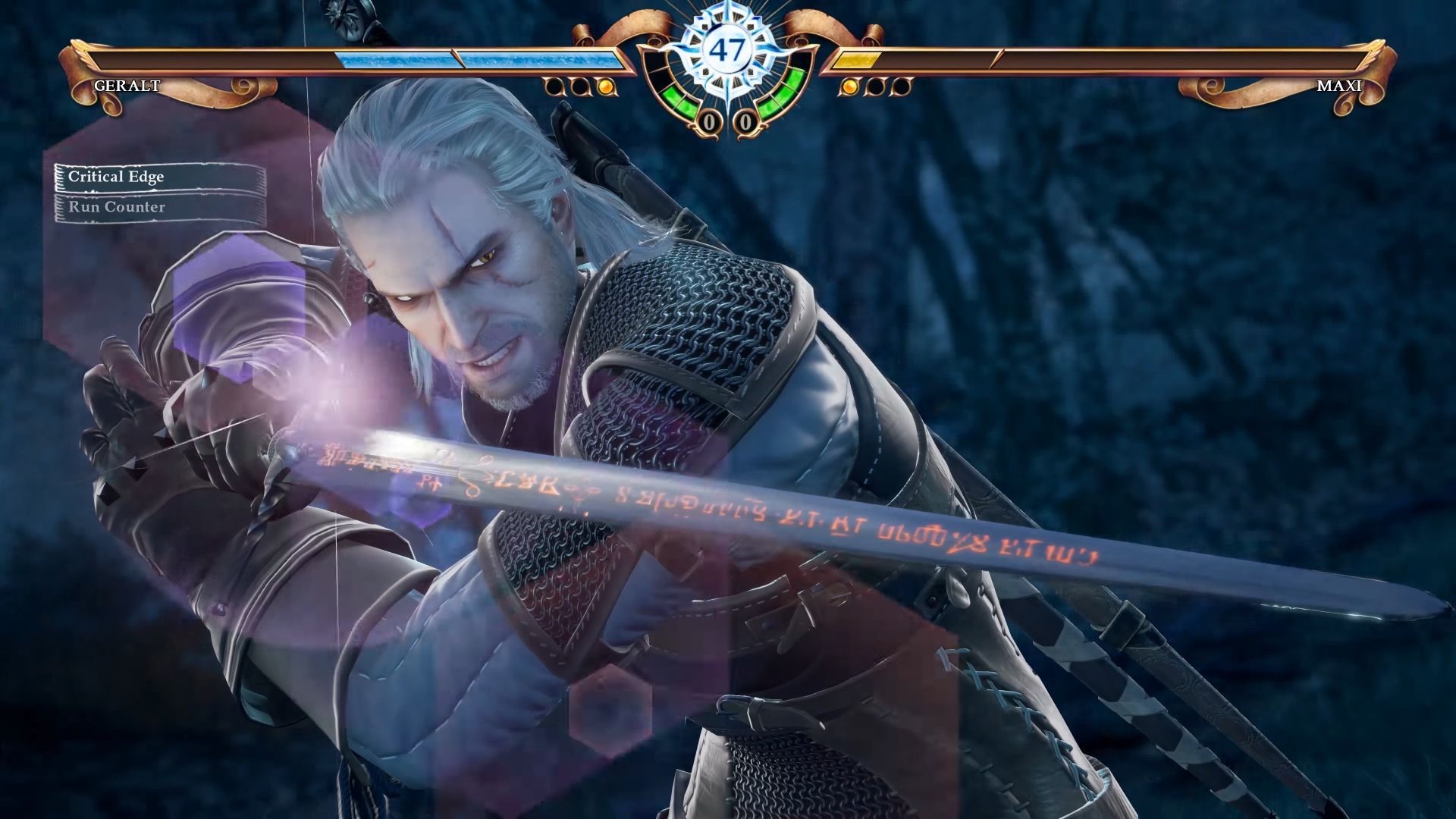
Fortunately, we aren’t here for the story, and where it matters, Soulcalibur VI mostly comes up with the goods. The combat is crunchy, fast-flowing and addictive. Its reliable 4-button system rewards mashing and experimentation for beginners, but not as much as it ultimately rewards patience and game knowledge. I like the current soul gage power-up system, which enables fighters to spend on special attacks or temporary power-buffs. There’s also the “reversal edge” move, which if successful pits the two players in a micro rock-paper-scissors match. It took me a while to warm to this slightly interruptive game-element, but I think several hours in I’m starting to get the point of it.
The list of more prosaic moves and combos is nearly bottomless, not to mention unique to each character, and it’s here that VI becomes a game of depth, recall and practice. To flesh this out, it offers a few tools for in-house learning. There’s a decently comprehensive tutorial in the “Libra of Souls” mode – it’s a little top-heavy with information and sometimes a little vague on what move it’s asking you to execute, but I found it was worth a revisit once I’d spent a few hours with the game, even if my initial foray into it was largely a waste of time. There’s also a “practice” mode where you can have an AI opponent behave in certain ways, and where each character’s full move-list can be accessed anytime. There are further extensive written “Combat lessons” in the game’s Museum section, for those so inclined to learn via reading lots and lots of text. I suspect in my heart that I’ll probably never have the patience to go beyond a certain threshold with this particular game, but I wouldn’t say that’s the game’s fault, as such, and I think they’ve done the right thing by putting all the information in there for players who want it.
Perhaps the most significant leap forward for VI (PC version aside) is that it comes fitted with a couple of robust online matchmaking systems that seem to work as advertised, and in my experience so far are largely free of lag and bugs. The casual mode lets you jump into a simulated loungeroom of up to 8 players; each taking turns trying to topple the incumbent victor while everyone else spectates and waits for their go. Quaintly, even on PC, this mode doesn’t let you type into the chat room, but instead asks you to select exclamations/greetings/cheers/requests etc. from a few pages of choices. And it was there on launch day, bathing in the onset of a particularly foggy head-cold, controller on the desk, watching two Astaroths lumberingly pummel the heck out of each other, while another spectator and I made ironically inane comments, that I thought maybe I loved this in all its potential and its time-wasting nothingness.
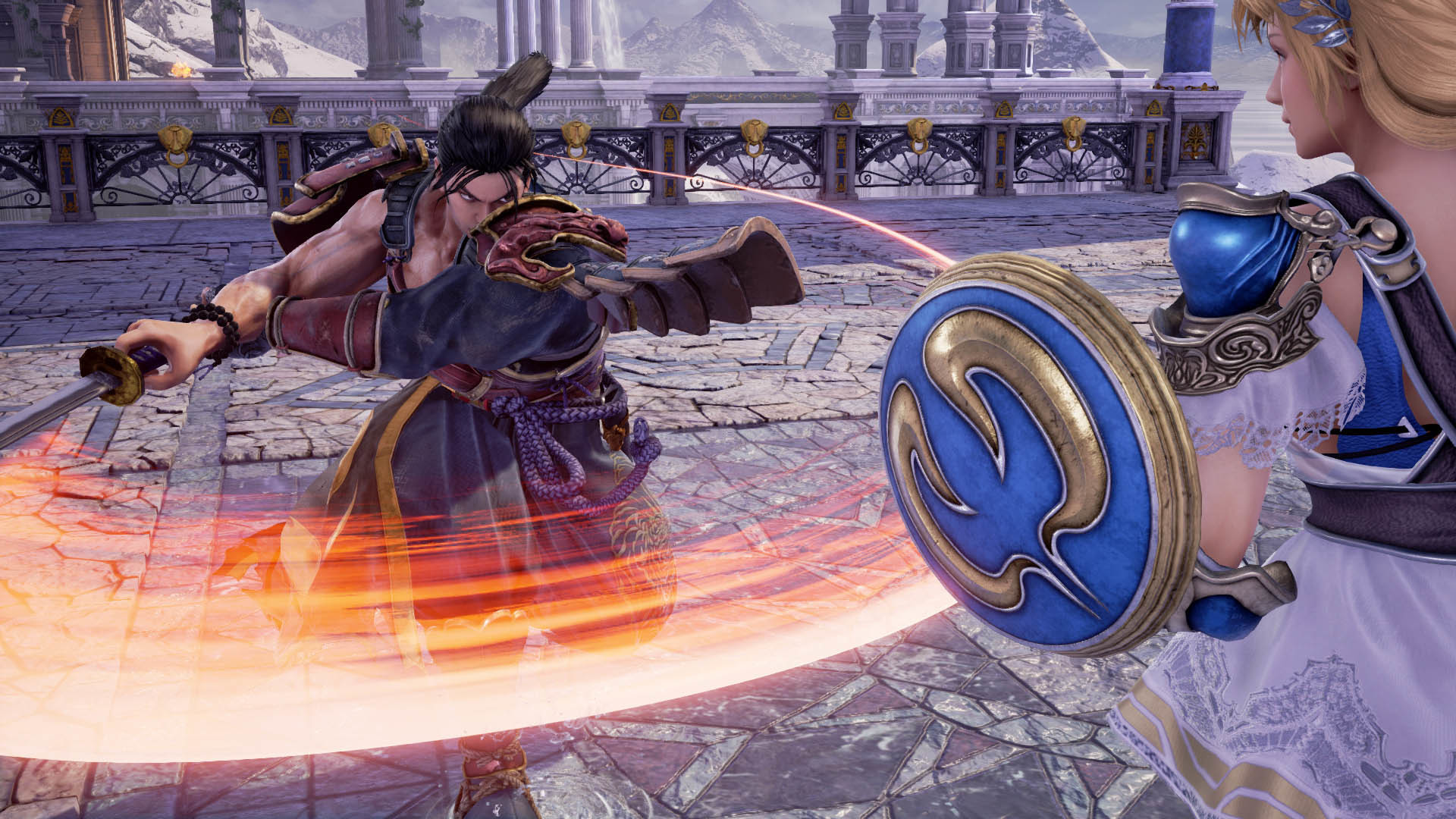
But it’s in ranked that I’ve felt the highs and lows smashy-throwy has to offer. It works on a character-first basis, getting you to pick before search and then blindly matching you against another player in a best of five, with the winner taking away a few ranking points (for that character only mind you). It’s sterile, chat-free, efficient and pure. The sense of elation after coming back to win after being 2-0 down and on the ropes is immense; only countered on other occasions by the inevitable frustration of being beaten by someone who knows how to string together a bunch of intensely powerful combos that you neither had the foresight to block nor the patience to learn. Of course, the plaudits for all this is caveated on a healthy community of interested players sticking with the game. It’s a slight added annoyance here that there’s no display of how many other people are currently sitting in the ranked system. Conversely, though, it’s great that you can faff about in training or arcade mode while waiting for a match, which is the kind of often-overlooked accessibility tweak that goes a long way to keeping a multiplayer system viable.
For the most part, it feels fairly restrained in its visual stylings. The story modes rely on lo-fi illustrations rather than cut-scenes, a choice which perhaps came from budgetary restraints but arguably has its sort of charm. The fighting animations and characters are cleanly drawn but not spectacularly demanding to render, thank the design deities. As has generally been the case with the series, there’s a nice balancing of big sword arcs with some well-coded use of colour to communicate combat information to the player – there’s always a lot happening, but it never feels overwhelmed with clutter. It also has a uhm, thorough and versatile character-creator, with which players have already made all kinds of cool tributary figures and dick-monsters. For instance, in ranked matches recently, I lost to a gothy/witch take on Volvo, followed up in another game with a neat rendition of Boba Fett. As foreshadowed earlier, though, I’m less enamoured with the pervy costume and figure designs of the canonical female characters, which remains stuck firmly in 2002, only now it’s more of a problem because of the cleaner graphics. Soulcalibur VI is otherwise the kind of pick-up-and-play couch-friendly game that might be fun to play with all sorts of friends, family, mates and dates, and so beyond the obvious gender-representation issues here, it would be nice if the series had grown up a bit, so it didn’t figuratively scream “HELLO, THIS IS A GAME FOR HORNY TEENS” quite so loudly every time someone picked Ivy (or Taki, or Sophitia, or any of them, frankly).
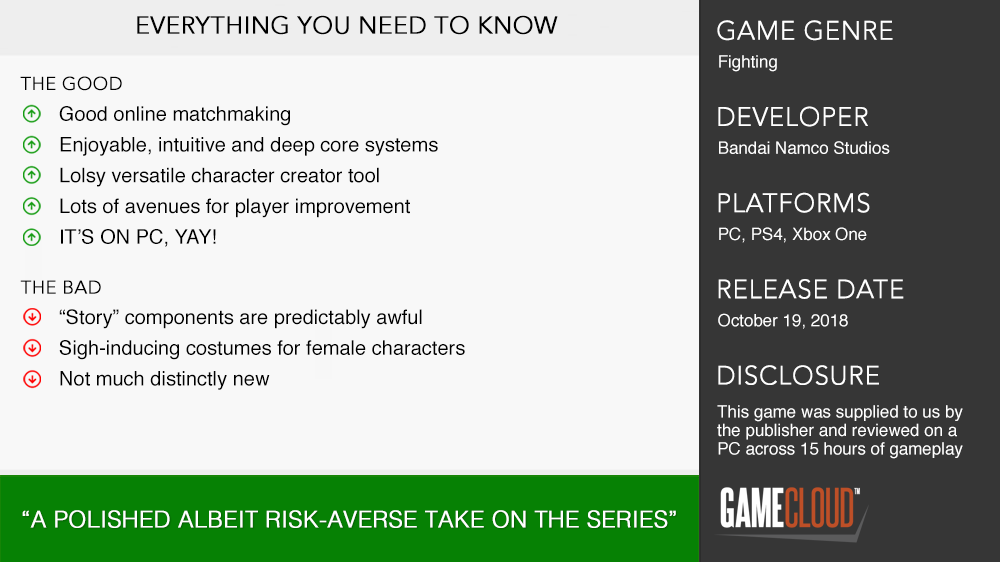
It’s true that there’s surprisingly little in the way of innovation in Soulcalibur VI, and I’m not one hundred percent on board with condoning a game that takes so few risks and perhaps feels several new characters short of a final product. Yet while this complaint still stands, I can mostly forgive it because, at its best, Soulcalibur VI is a giddy pile of fun. It’s fun because it’s a particularly well-tuned version of the same free-flowing slashy-kicky fest the series has always been, but now it’s also on PC. It’s fun because it has good online matchmaking options that actually seem to work. It’s fun because the character creator is ridiculous and good and excessive. It’s fun because it’s an intuitive fighting game that provides some self-improvement tools for the competitively-minded. I like it, basically, despite how it took me a while to be sure I was even playing a new title, and I hope it sticks around for a while.











